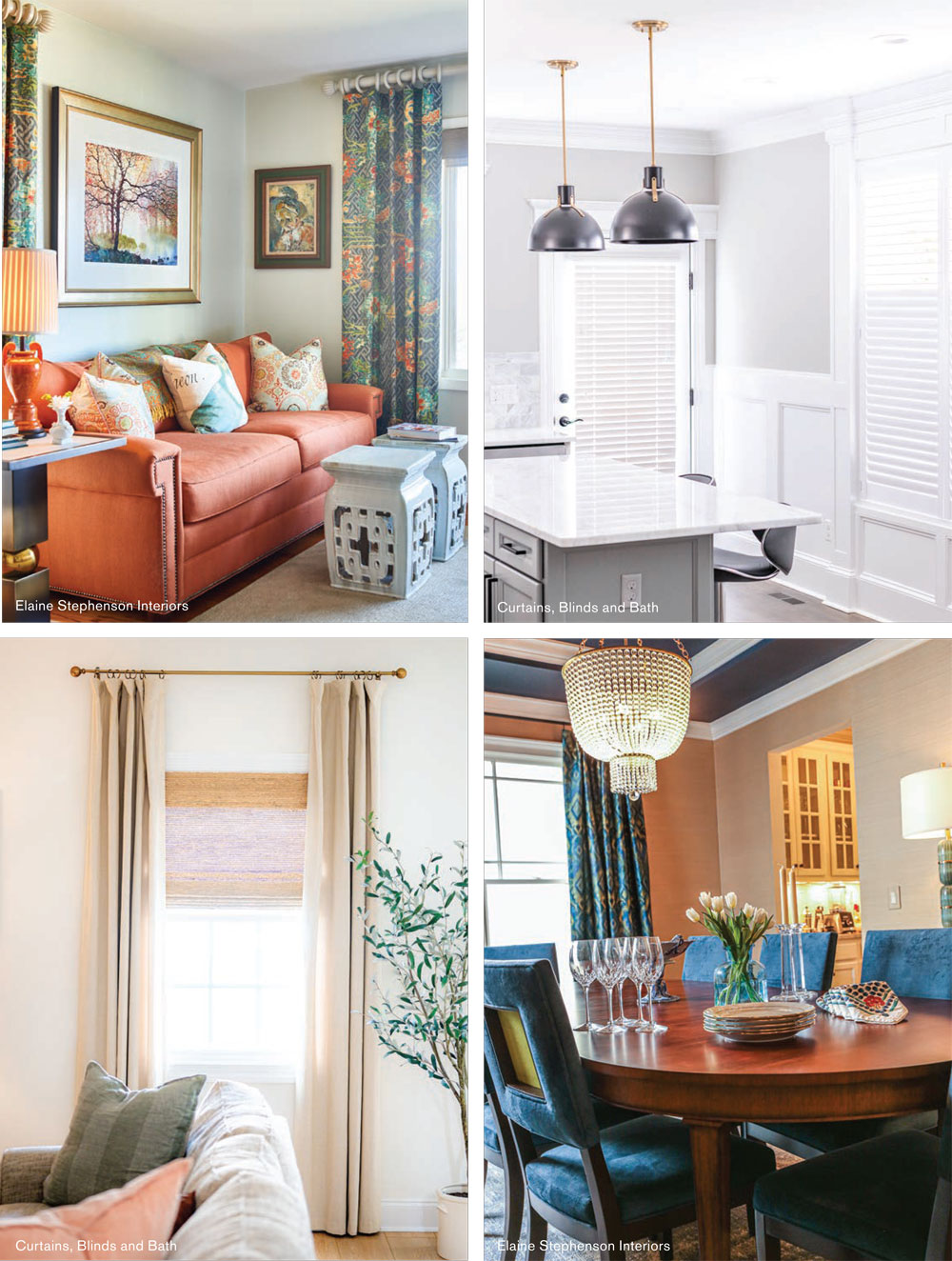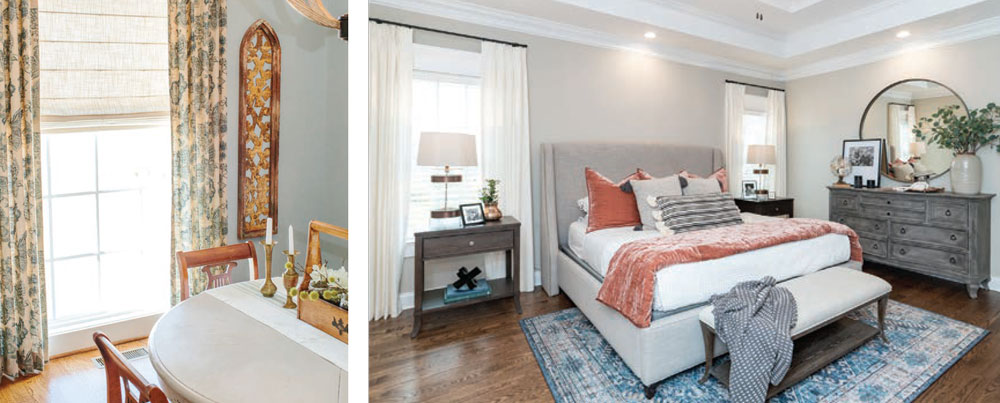Window Dressing | Create a Style Statement with Window Treatments
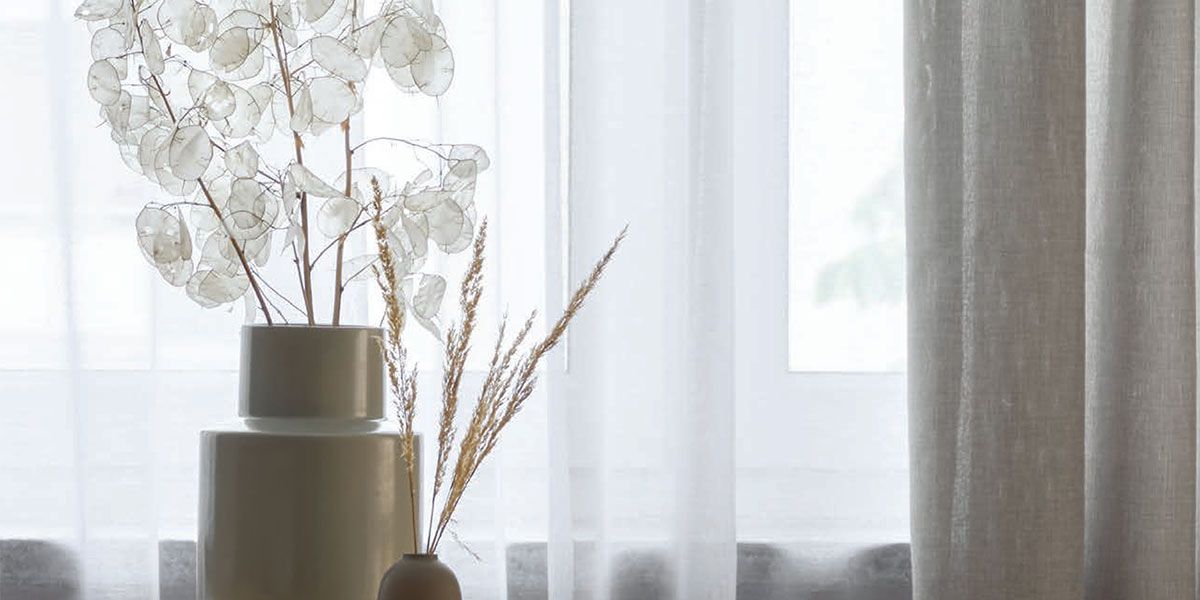
Window treatments, such as blinds, shades and curtains, provide privacy and light control, but also add softness, texture and personality to a room. Advances in automation (push a button, your blinds go down), new fabrics, and layered window options ensure that your choices are endless, but deciding on a direction can be daunting.
Cindy Greer of Curtains, Blinds and Bath in Forest advises to think about function first. For example, do you need a blacked-out bedroom for sleeping? Is privacy a concern during daylight hours, or just at night? Can you reach the window easily, or would automation be helpful? Are the treatments just for looks? Decide what functionality suits your needs, and you’ll have a launching point for making good choices.
Layered windows
A layered window treatment is usually a combination of two different treatments on a single window, creating multiple means of light control and/or texture. “There is often a minimalist view to our homes and windows now, and even layered treatments are generally more lightweight and airy, with the ability to let all the natural light in when it’s wanted,” says Greer.
The base layer is blinds, shades or shutters, which can be opened and closed easily. The second layer is either moveable, such as drapery panels, or a decorative accent, such as a cornice at the top of the window. A cornice is made of wood with a layer of batting, covered by a decorative fabric for an upholstered appearance. It is installed into place and is not moveable. While valances with swooping and draped fabric were once popular, those have fallen out of favor as most homeowners now prefer a more tailored look.
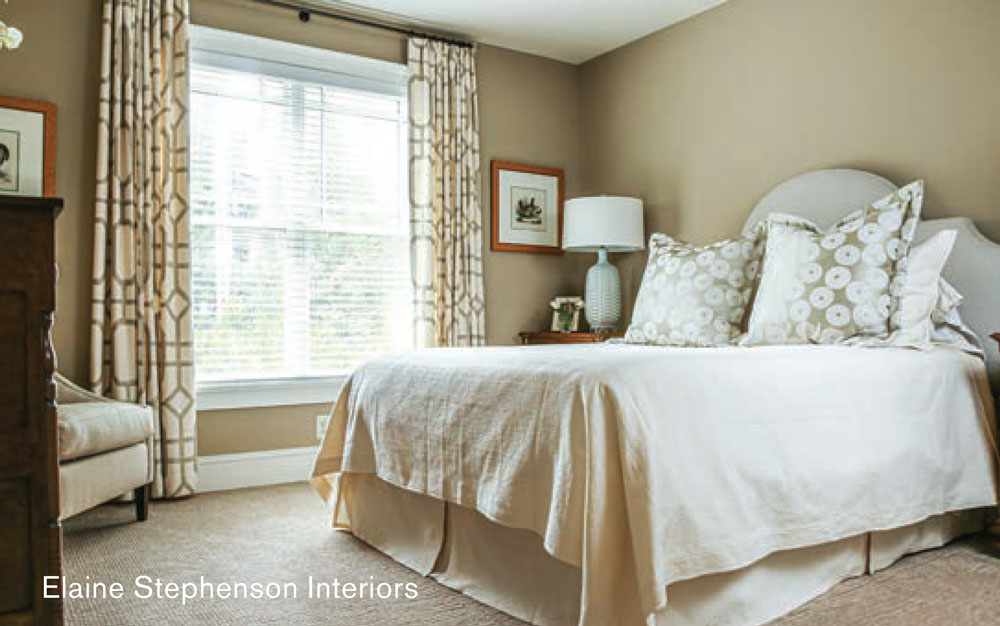 Layers work together to create a unique design statement while controlling light and creating privacy at any time of day. In choosing your layered treatment, start with the base layer, which, in an up-to-date home, should provide neutral texture. A woven wood shade lends an organic element, incorporating natural wood, grasses and reeds, and is a favorite of Elaine Stephenson Interiors in Roanoke. “There are many different weaves and textures, and you can get a variety of privacy and light control with these shades,” explains Seely Nicholson, a designer with Elaine Stephenson Interiors. “They add a layer of warmth to any room, can stand alone or complement other window treatments, and are a reasonable price.”
Layers work together to create a unique design statement while controlling light and creating privacy at any time of day. In choosing your layered treatment, start with the base layer, which, in an up-to-date home, should provide neutral texture. A woven wood shade lends an organic element, incorporating natural wood, grasses and reeds, and is a favorite of Elaine Stephenson Interiors in Roanoke. “There are many different weaves and textures, and you can get a variety of privacy and light control with these shades,” explains Seely Nicholson, a designer with Elaine Stephenson Interiors. “They add a layer of warmth to any room, can stand alone or complement other window treatments, and are a reasonable price.”
A Roman shade, which is a fabric shade that when raised stacks the fabric in horizontal folds, also works nicely as a base layer, as does a roller shade, which rolls into a cartridge at the top of the window for a more modern and minimalist look. Wood or wood-look shutters can be a good base layer for situations where privacy is often desired, such as a window facing a busy street or in a powder room. Be aware that shutters can significantly impact the amount of natural light that reaches a room, darkening it significantly. If you want to maximize your budget, a natural wood or white blind could also suffice.
Ideally, you’ll be able to execute an inside mount for the base layer. This means simply that the blind, shade or shutter can be hung within the window frame to minimize the profile, tucking it nicely within. However, some window frames don’t have enough depth to allow for this, and in this case, an outside mount is necessary, though choosing one with a slim profile is best for the overall finished look of your window.
The top layer is most often a cornice or curtain/drapery panels. A cornice is a good choice in a high-traffic area where curtains seem impractical or easily soiled (for example, near a breakfast nook where small children eat), providing some pattern, interest and softness at the top of the window, and hiding any hardware from a blind or shade underneath it. A cornice is also a great option for first-story windows that you can view from an open second-story loft or landing in your home, as the top is covered and upholstered, hiding any unsightly hardware of the shades or blinds. In a large bank of windows with several shades, a single cornice that runs the length of the windows at the top is unifying.
When you want the drama and depth of curtain panels as the top layer of a window treatment, nothing else will do. Curtain panels can also be a standalone window treatment, but they can be particularly tricky for homeowners to execute on their own, so we talked to our design experts for tips on making your curtains look professionally done.
Curtain panels done right
Curtains or drapes can be dramatic and bold, or sheer and subtle, and they can range in fabrics from voluptuous velvets to light linens, patterns that wow and neutrals that blend. But one thing is constant: When they are hung badly, they make the wrong kind of style statement.
Greer says to start with a tape measure, and an iron. “Every panel is different, so if you are buying premade and not custom, even though it may say 84 inches, it can vary, so you’ll want to measure each one yourself,” she advises. “The key to making it look good is to iron it first. Don’t hang a panel thinking the wrinkles will fall out, because they never will.”
Panels can be like magic, adding length to a smaller window and balance to a wide window, but only if they are hung correctly. The most common mistakes are hanging the curtain rod too low (it should be as close to the molding or ceiling as possible), not extending the rod wide enough so that the panels can come off of the sides of the window instead of always blocking light, and hanging the panels too low (dragging the ground) or too high (not kissing the floor). “We like to set out the curtain rods four to five inches on each side of the casing to allow for maximum light through the window,” notes Nicholson. “For panel length, we like for them to just graze the floor, not puddle.”
Our experts advise putting the curtain on the rod as it will hang, and holding it up to the window to ensure the length is correct before drilling for the rod. Another sad sight at the window is a rod that bows under the weight of the curtains. “If you are going to be opening and closing constantly, it puts stress on the brackets and you need to select a heavy-duty rod,” says Greer. “My advice on rods is to use all of the supports that come with it. You cannot hang a rod on a wide window without support.”
As for making the panels look proportionate, whether you plan to use them for light control or simply for decor, they should be able to close fully without pulling them taut. A single panel on a very wide window is too thin to carry off the look—you need volume that echoes the window’s width. If you are minding the budget, and don’t have a standard window height, buy the longer curtain and have it hemmed by a professional, who can also iron the panels for you. It will cost significantly less than custom, but you can custom fit your window so the panels look best.
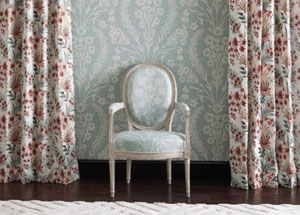 Matchy-Matchy
Matchy-Matchy
As trends do, they eventually cycle back around, and the “matchy-matchy” look is coming back in home decor in a big way, as “grandmillennials”—a mash-up term of Grandma and the generation born between the mid-1980s to 2000—embrace more color and pattern. Grandmillenials favor design trends that, well, a grandma would—think pleated lampshades, pattern-on-pattern decorating, chintz, ruffled linens and needlepoint pillows. Drapes or window treatments that exactly match wallcoverings, or match other fabric in the room, is part of this trending look. To get it, choose a wallcovering line that offers a coordinating fabric. A talented seamstress can even create a window covering that continues the wall pattern exactly, for a look that would make your great-grandmother swoon.
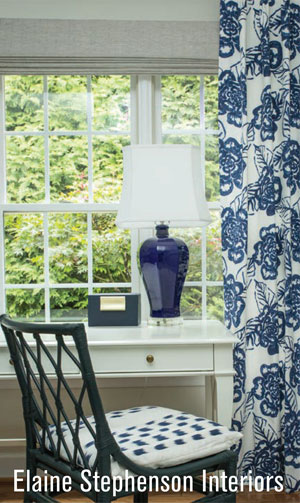 Challenging windows
Challenging windows
Many homes have challenging windows that frustrate a homeowner trying to determine a good window-covering solution. Many homes built in the 1980s, 90s and beyond have soaring cathedral ceilings, with double-height windows. A DIY solution has often been to run a curtain rod between the windows, only covering the lower window. Greer says this is a mistake, as it lacks proportion and visually cuts the windows. You’ll most likely need a custom treatment, consisting of a curtain rod at the top window and double-height panels. While this is an involved solution, it will unify the room and lend significant warmth—real and visual.
Windows that run close to a corner, leaving no room for a curtain rod, can be frustrating, especially if you crave the softness of fabric. In this case, a relaxed Roman shade could fit the bill, especially if the window is deep enough for an inside mount. The relaxed Roman has a swoop instead of a straight- across design, so a patterned fabric can shine. Nicholson says if your window is close to a corner but you want to use a rod, you can add an end cap instead of a finial, which can sometimes fit.
A bank of windows that juts out from the house, often called a bay of windows, can be tough to unify. However, custom curtain rods can be made that hug the contours of the windows, allowing panels to be pulled across the entire bank. This prevents the homeowner from having to pull down several individual shades each time privacy is desired.
Automate it
If a window or bank of windows are too difficult to reach to raise and lower shades, automation can make life easier, and it has come a long way in the past several years. Existing shades can be automated with a DIY kit that you can purchase on Amazon for less than $100, allowing you to put a shade on a timer, or control it from your phone.
Most companies that sell custom window treatments offer automation, and you can choose from a handheld remote or wall-mounted control. A battery operation is possible for windows that don’t have a nearby outlet. Certain brands can also be voice controlled with compatible home devices, like Google Nest or Amazon Echo.
There are more options than ever before in automation, ready-made, and fully custom window solutions, which can allow you to proceed with confidence in dressing your windows. ✦
base layer, blacked-out bedroom, blinds, cornice, curtain panels, curtains, Drapery Panels, layered window treatment, roman shade, shades, shutters, window dressing, Window Treatments
